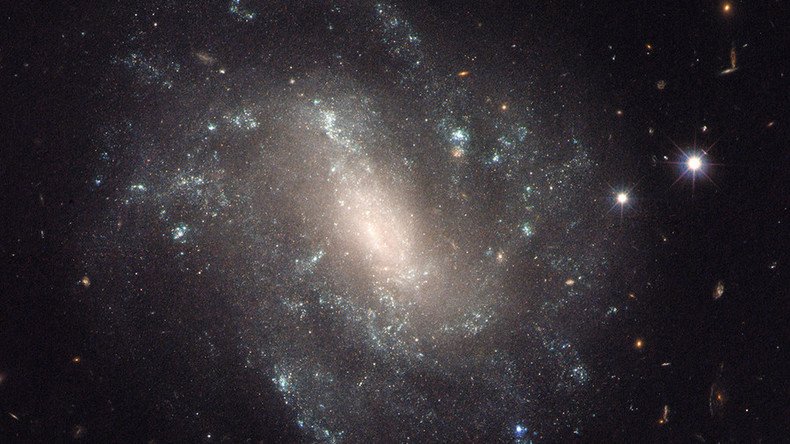5th force of nature possibly discovered, US physicists say

Scientists are ecstatic over the fact that they may have just discovered the fifth fundamental force of nature. The possible discovery of a previously-unknown subatomic particle looks set to finally bring the elusive dark matter into the mix.
The discovery centers on a new type of boson that possesses characteristics previously unseen in particles. Furthermore, its existence casts doubt upon whether the known ‘sector’ of matter and particles exists alongside a ‘dark’ sector – both interacting with each other via another, unseen force.
“If true, it's revolutionary,” said Jonathan Feng, professor of physics & astronomy at the University of California, Irvine, in a press release.
“For decades, we've known of four fundamental forces: gravitation, electromagnetism, and the strong and weak nuclear forces. If confirmed by further experiments, this discovery of a possible fifth force would completely change our understanding of the universe, with consequences for the unification of forces and dark matter.”
UCI researchers arrived at their conclusions by studying data from Hungarian physicists and other prior experiments in the area. At first there was disappointment: the scientists were trying to locate certain ‘dark photons’, or particles that would signify the presence of dark matter – the most elusive force in the universe that makes up a staggering 85 percent of its mass, according to ICU.
The mid-2015 study by the Hungarian Academy of Sciences appeared to find a radioactive decay anomaly that hinted at a particle only 30 times heavier than an electron. However, according to Feng, their experiments did not confirm the Hungarians’ findings. That said, they did see “an excess of events that indicated a new particle, but it was not clear to them whether it was a matter particle or a force-carrying particle.”
READ MORE: Elusive ‘pentaquark’ particle finally discovered after 50 years of searching?
However, this was also the moment of truth, because it led them to a new theory that was stable enough to unite all existing data. This could only mean that a fifth fundamental force was at work. This data was outlined earlier in April, and a follow-up paper was released last Friday on the public arXiv server.
The resulting study was published in the journal Physical Review Letters.
Dispensing with the dark photon, the physicists posit a “photophobic X boson.” Other known forces before it only acted on electrons and protons. This new force interacts with electrons and neutrons at a very limited range. Scientists say there is no other boson possessing the same characteristics – hence the name ‘X boson’.
What’s more the energy to make it is not at all taxing: UCI says lab conditions were adequate all the way back in the 1950s to produce something like it. However, it interacts very weakly, and is extremely light. This is a good thing to a point, since many smaller labs around the world have the chance to take a stab at it and research it further, Feng explains.
This discovery, as all good science, brings with it even more exciting questions and could change our understanding of the universe yet again. Feng and team believe that, once combined with existing fundamental forces, we could be looking at “manifestations of one grander, more fundamental force.”
Feng also speculates that outside of the standard model of physics exists another, dark sector. Possessing its own matter and set of forces, it sometimes interacts with the area known to us now, the team thinks. Perhaps, evidence of this so-called dark sector was already gleaned in the Hungarian experiment.
“This dark sector force may manifest itself as this photophobic force we’re seeing as a result of the Hungarian experiment. In a broader sense, it fits in with our original research to understand the nature of dark matter.”
The good news is, “In a broader sense, it fits in with our original research to understand the nature of dark matter.”















